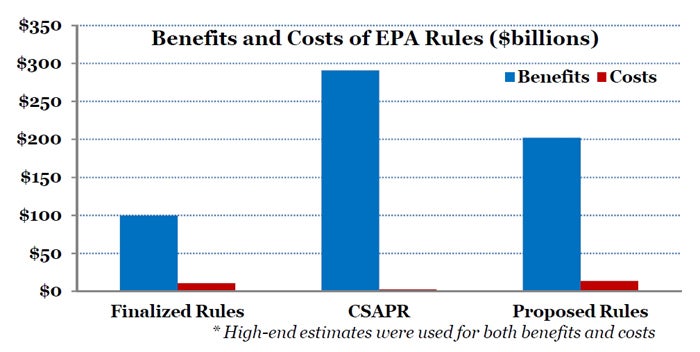Trying to put the rebound effect for energy efficiency in its rightful place is like playing a game of wack-a-mole. Predictably every couple of years, someone new discovers the counter-intuitive appeal of showing how more efficient energy policies may lead to more energy use. Wham! Told you there’s something wrong with those clean-car standards. Well, not so fast.
Yes, the rebound effect is real. But it’s also small. And what’s there is actually positive! Why shouldn’t people who can now afford to due to more efficient energy technologies be able to improve their lives?
Together with three co-authors (Ken Gillingham at Yale, Dave Rapson at University of California, Davis, and Matt Kotchen, currently on leave from Yale to serve as Deputy Assistant Secretary for Environment and Energy at the U.S. Treasury), I surveyed a bajillion+1 energy efficiency rebound studies. Nature then made us cut down those references to 6. We settled at 9.
We couldn’t find a single study that has the rebound be above 100% or anything close to it, what’s necessary to nix energy efficiency savings. The maximum number you can get is 60%, and that’s already quite a stretch. Think 30% as the upper bound for actual behavioral responses. Yes, we are more efficient today than we were a hundred years ago, and we also use more energy today. But that’s far from talking about the rebound effect. It’s simply economic growth.
Establishing a causal link between efficiency and energy use isn’t quite as simple. In the end, the rebound effect comes in four forms. Buy a more fuel-efficient car, and driving that next mile just became cheaper. The result: a bit more driving, to the tune of 5 to a maximum of 30%, although most likely much closer to 5-10% of the initial fuel savings. Then there’s the indirect effect: Drivers may now use some of the savings to buy other products that consume energy.
You can already see that we can’t just add these two effects. If you spend some of the gas money on driving more, you have less to spend on that plane ticket, and vice versa.
Then there are two macroeconomic effects: one via the price and one via technological advances. They are the trickiest to pin down and could, in theory, be the largest. But theory lends a helping hand in getting an upper bound: the basic demand-and-supply relationship tells us that the macroeconomic price effect can’t be more than 100%.
And once again, all these effects aren’t anywhere near that threshold. 60% is as high as it gets for the combined effect, and only in rare circumstances. For the most part, it’s much closer to 5 to perhaps 30%.
So where does that leave us?
When designing energy efficiency policies like clean-car standards, consider the rebound effect, much like the government already does. The Department of Energy’s model uses a highly appropriate 10% rebound figure for the car standards. And that’s about it. Not much else to see here.
If you did want to take it a step further — full disclosure: a step I couldn’t convince my three co-authors to take in the Nature piece itself — everything else equal, the existence of the rebound effect may prompt us to use even stricter energy efficiency standards. If you have an overall target in mind, and the rebound effect shaves off a bit, you ought to consider using a slightly stricter target to get back to where you wanted to be.
For more, check out the full Nature piece. Well worth the $32 to put the rebound effect in its rightful place once and for all.











